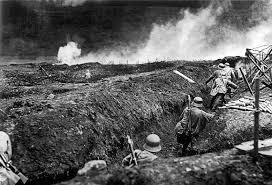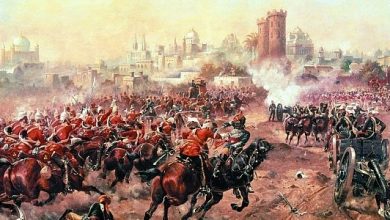Peasant uprisings have had a lasting impact on the socio-economic and political fabric of the nation and have contributed immensely towards India’s freedom struggle, whether it is before the Revolt of 1857 or much later during the Gandian era. Nevertheless, the most important timeframe which peasants movement occupied in the making of India was between 1857 and the rise of the INC towards the final decades of the 19th century.
While peasant movements after 1857 did not directly contribute to the political vision of a free India, it ensured a line of continuity of resistance towards British rule in different pockets of the country and filled the gap between 1857 and the rise of the Moderates. Again, while most peasant moments were of socioeconomic nature, it nevertheless brought huge sections of the agrarian community within the folds of political action and had distinctive features which separates them from the uprisings prior to the Revolt of 1857. A look a three major peasant uprisings are exemplary in this regard :
Important Peasant Movements after the Revolt of 1857
THE INDIGO REVOLT OF 1857 – Led by Dighamabar and Bishnu Biswas of Govindpur village in Nadia, the Indigo Revolt focussed around the issues of fraudulent contract, low price and outright force used on Indigo cultivators who were forced to cultivate indigos in their fields. While Indigo planters used zamindari powers to evict the peasantry, the peasantry with the help of the intellectuals retaliated by making use of the legal machinery and social boycott
The initiative, cooperation, organization and discipline of Ryots along with Hindu-Muslim unity and the role of intellectuals forced the government to create the Indigo Commission which gave in to the demands of the peasants. The period also saw the use of literature to reflect the cause of indigo workers, as can be seen Dinabandhu Mitra’s Neel Darpan.
Unlike in 1857, the government’s response was much subdued due to three major reasons:
a) The organized coalition between intellectuals and the peasantry which successfully resisted the British, despite being relatively nonviolent.
b) The harrowing experience of the Santhal Uprising two years ago when the British had used violence countermeasures that had further embittered Santhals against the empire .
c) The changed nature of revolts and the decreased clout of the East India Company vis-a-vis the British Crown.
These three were recurrent features in many peasant uprisings post 1857.
PABNA REVOLT OF 1873 : Claiming to be the “ryots of Her Majesty the Queen and her only “, peasants at Pabna went on a rent strike against the high rates set by the zamindars. The legal resistance to the oppressors was also seen here , as in the Indigo revolt, with the result of Bengal Tenancy Act being passed in 1885. The Pabna Revolt however focused on fighting the oppression by the zamindars and not the system itself. The Indian Association’s role in asking for permanent fixation of tenant’s rents was an example of how social organizations started getting involved with the issues of the peasantry.
THE DECCAN DISTURBANCES OF 1874 – The prevalence of Ryotwari System in Pune and Ahmednagar was impacted by two crucial developments : the end of the Civil war in 1864 led to decrease of cotton exports while the government tried to raise revenues from cotton produce by 50% under the Revenue Settlements Act of 1867. The ryots revolted, with a large scale burning of bonds as seen in Bhimthari taluk. The Bullotedars of the area were boycotted and many of the money lenders’ accounts were set to fire. Finally, the resistance was calmed by the passage of Deccan Agriculturalist Relief Act of 1879.
Again, the role of intelligentia was seen in Ranade’s Poona Sarvajanik Shabha’s opposition to the Revenue Settlements Act of 1867.
Others peasant uprisings after 1857 also exhibited similar characteristics. However, some were also of a more violent nature, as can be seen below :
Ramosi Peasant Uprising of 1879 – Led by Vasudev Balwant Phadke, the technique of social banditry was recurrent in Ramosi uprising.
The Kuka Revolt of 1872 – Led by Baba Ram Singh , Kuka Revolt was of a violent kind where 79 rebels were blown up by cannons.
Some shortcomings of the present uprising were as follows:
- The peasant uprisings mostly revolved around economic issues and had limited objectives. They lacked a positive conception of an alternative society.
- They didn’t focus on the system of colonialism itself, which was the root cause of all the problems – a fact that the moderates were later quick to identify.
- They had limited territorial reach and lacked organization for long-term continuity.
- Being a result of unbearable oppression they were instinctive and spontaneous in nature and couldn’t sustain for a long period of time.
Some significant developments caused by peasant uprisings were as follows:
- Large swathes of the agricultural class was enthused with the idea of resistance. This was especially significant in a primarily agrarian demographic of India and would later be useful in the Gandhian phase of freedom struggle.
- The peasant uprisings led to a shift in the nature of revolt where landlords were either crushed or co-opted in the movement.
Peasant uprisings like the Indigo Revolt of 1859, the Pabna Revolt of 1873 and the Deccan Disturbances of 1874 led to a confluence of two important sections of Indian society: the peasantry and the intellectuals, which was to be of great help the later phases of the freedom struggle.
The peasant uprisings filled a huge gap in the period between 1857 and the rise of the Moderates by maintaining a momentum of resistance to different facets of the British rule. This is perhaps theirs greatest contribution to India’s freedom struggle.



